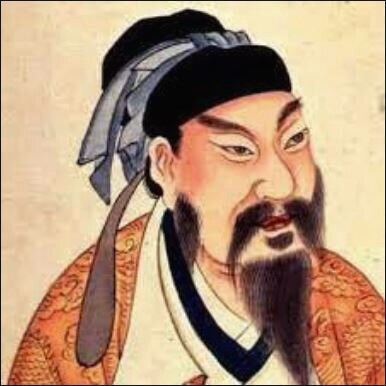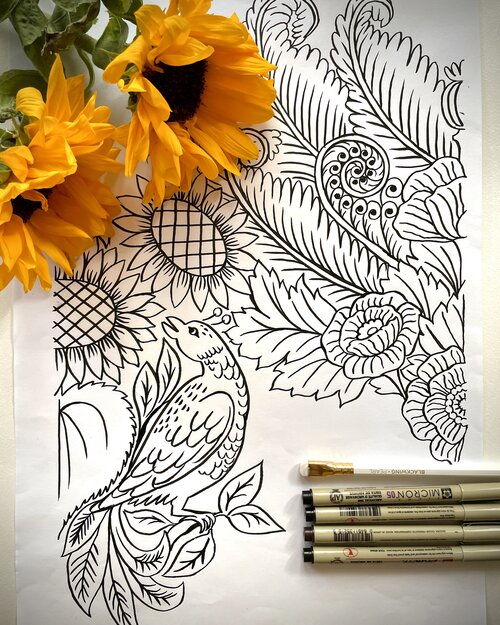Historic Patterns: Damask
Apr 28, 2023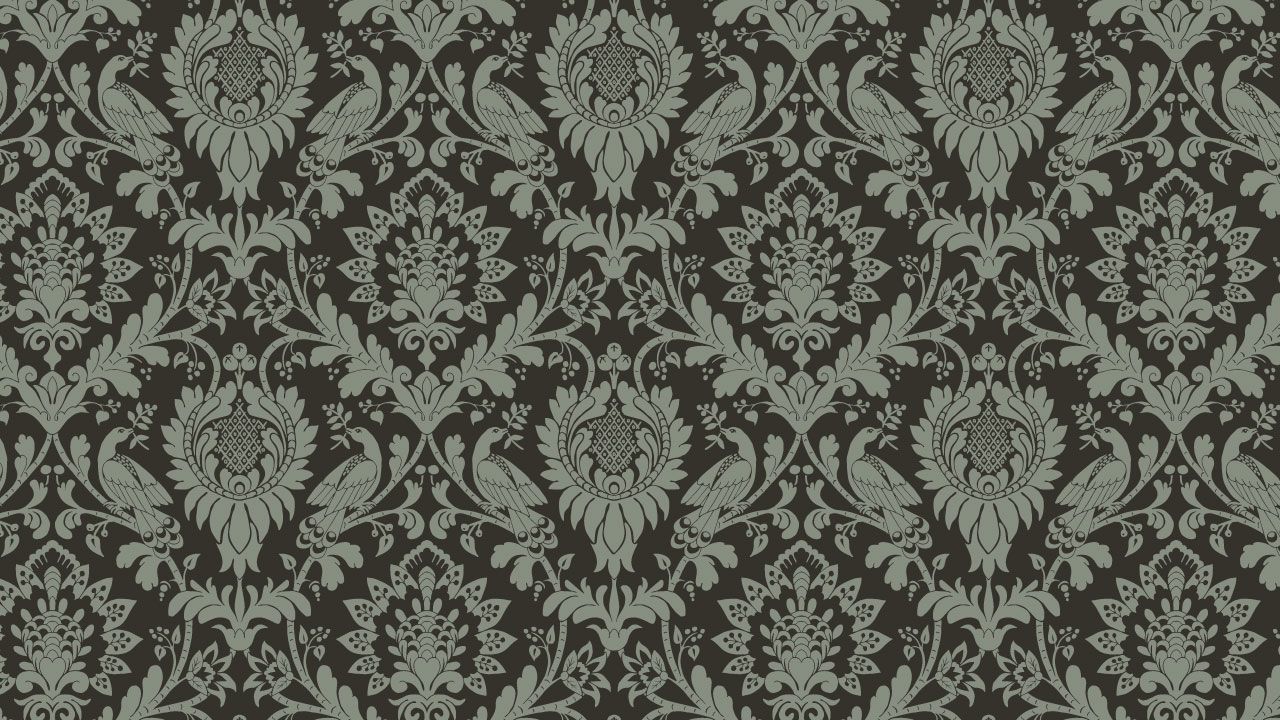
From sumptuous woven court robes in the 5th century China, to dramatic flocked wallpapers today, Damask patterns offer really complex designs, often with elaborate and symmetric medallions that seem to intertwine and overlap, making it difficult to see where the repeat begins and ends. This is part of the intrigue that draws you in to take a closer look!
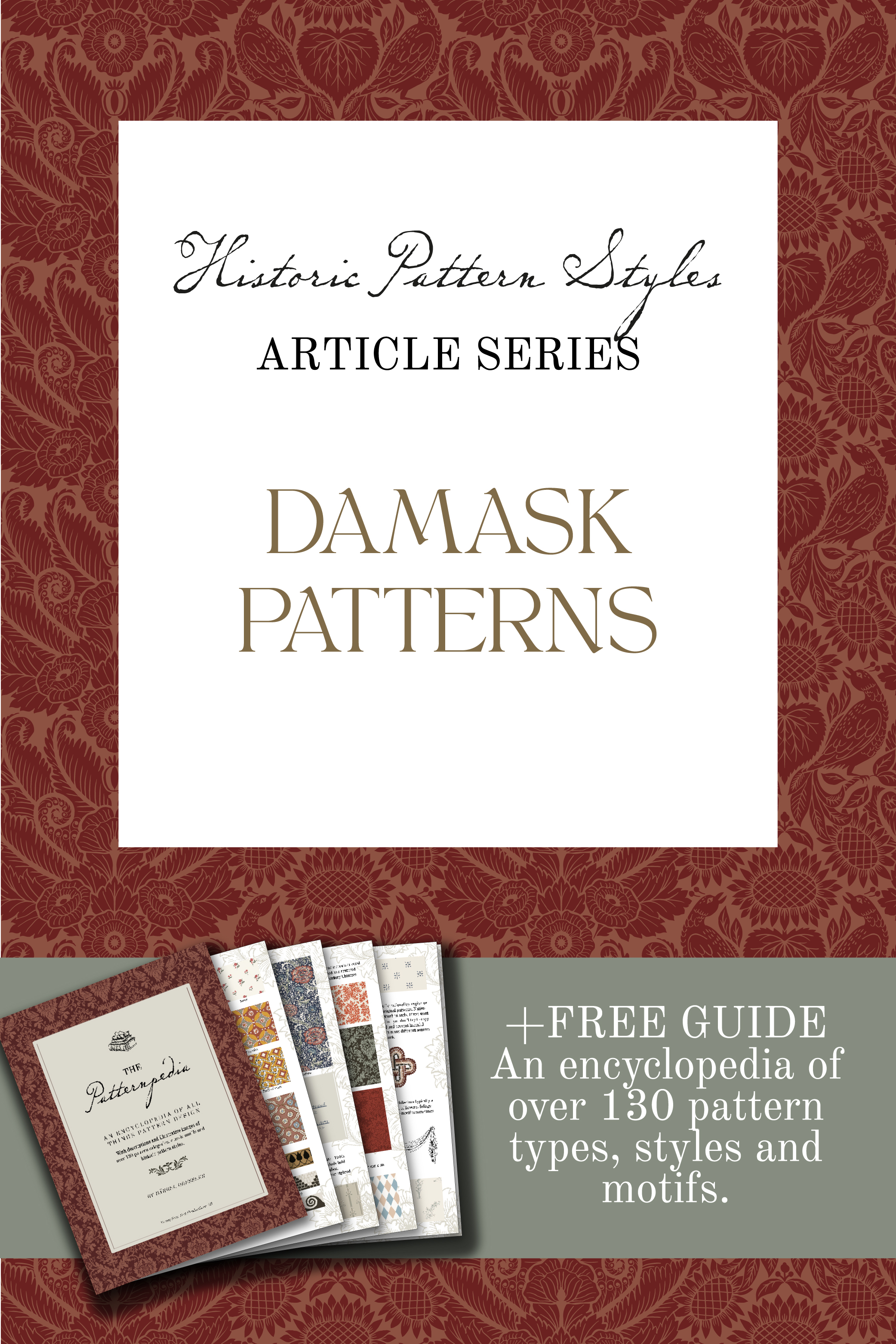
This gorgeous, heritage design style has a rich history where the stories of its rise through ancient Chinese dynasties and journey along the silk road (including smuggling by monks), its fall out of favor during the European industrial revolution and revival through the Arts & Crafts movement, are as precious and interwoven in its history as much as the fabric threads themselves.
Damask still endures today, making it a wonderfully relevant and timeless pattern for surface pattern designers to adapt to their own style.
THE HISTORY OF DAMASK PATTERNS
The first Damask textiles we know of were produced in China, around 300 BC so this is an ancient weaving technique. At the time specific regions in China were known to specialize in this unique weaving technique, that later became known as Damask.

Damask with botanical and animal motifs. Designs & Image by ©Bärbel Dressler.
Early Damasks were woven on hand-looms, rich, heavy fabrics made of the finest silks and linen, often with botanical and animal motifs. They could have two contrasting and even multiple colors, so not just the monochrome we associate damask with today. Oftentimes metal and gold threads were woven in to make them even more beautiful and exclusive.
Emperor Wendi of the Sui Dynasty circa 5th century wearing Damask robe
Damasks were made with exclusive and expensive materials such as silk and gold, which meant only the wealthy and noble could afford them. There are records of a 5th century Chinese emperor, Wendi of the Sui dynasty, who owned a damask court robe.
So as an exclusive commodity Damask fabrics became an important trade along the Silk Road, from the East to the Mediterranean. As it spread to the European regions it became really popular and in demand. Still, it was an expensive, luxury product for the rich and famous. And of course, soon European kings and rulers wanted to get their hands on the secret behind producing these coveted silk fabrics.
In 551 two monks who had been preaching in India arrived in China where they observed how the Chinese raised silk worms and produced silk. Since adult silkworms are very fragile they had to get silkworm eggs for transportation instead. They couldn’t just go and buy some as it was totally forbidden, so they found a secret way to smuggle them out of China, by placing the eggs inside their hollow bamboo sticks!
At this time these coveted, woven and reversible fabrics weren’t called Damask yet, they were known as ”diaspron” which later became ”Diaper”. The fact that it was called ”diaspron” gives us a clue that the patterns had characteristic diagonal designs.
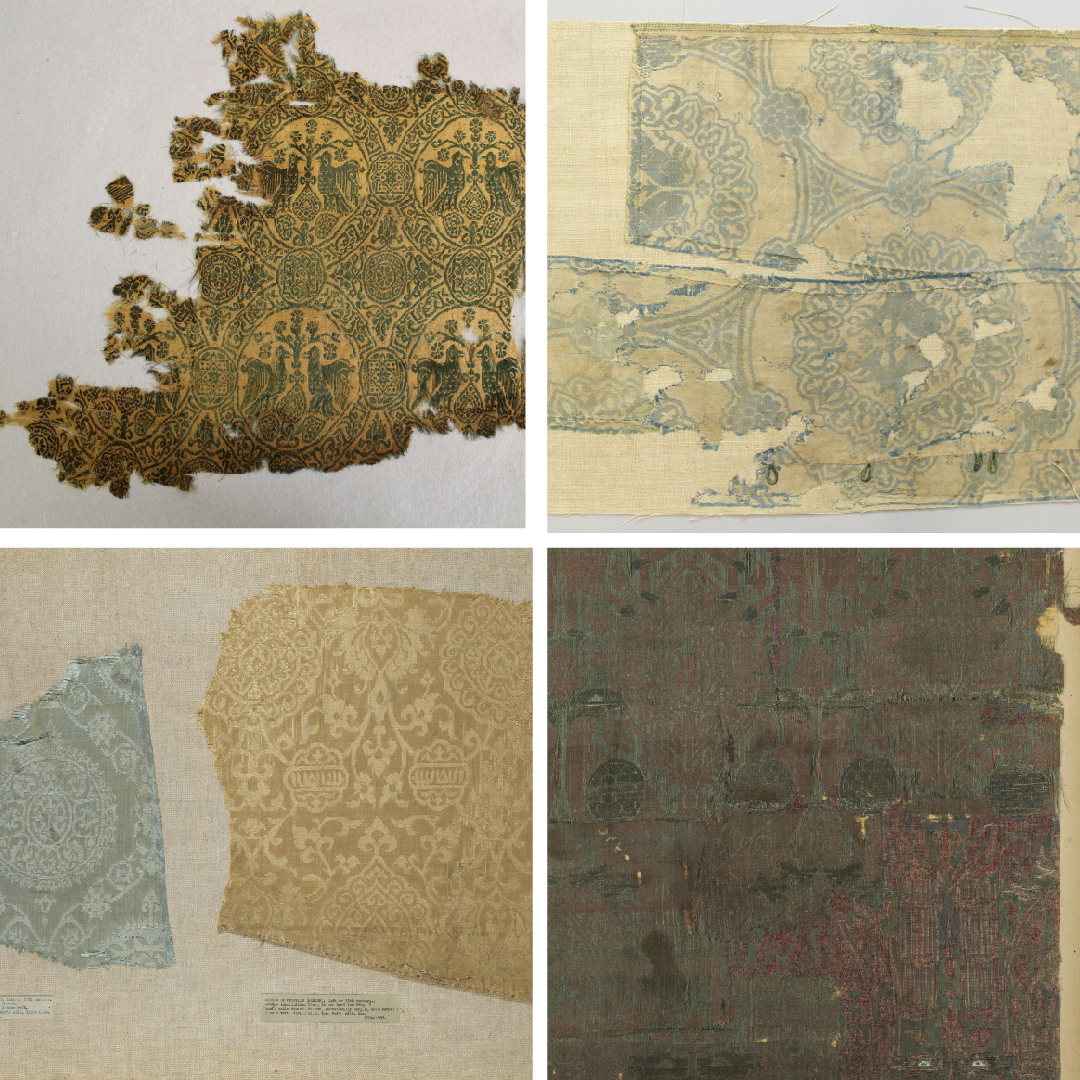
Top Left: Fabric_Iran_1000-1199. Image from V&A Museum.
Top Right: Fabric Egypt-Iran 1100-99. Image from V&A Museum.
Bottom Left: Fabric_Syria_1300-1500. Image from V&A Museum.
Bottom Right: Fabric_Italy_1300s. Image from V&A Museum.
On their way along the trading route of the silk road, from China and the Far East to Europe, the merchant caravans passed through the city of Damaskus, which today is the capitol of Syria.
During these early centuries and beginning of the Middle Ages, Damaskus was a big hub for trading and manufacturing of luxury silk fabrics, including the Diaspron fabrics. The fabrics manufactured in Damaskus were considered of very high quality, and were known for their unmatched beauty and flawless production. And so the traders started to refer to any ornamental patterned silk or satin fabric as ”Damasks”. And this is how we believe the name that we use today for this specific woven, fabric was coined.
The word ”Damask” first appears in European records in the mid 14th century.
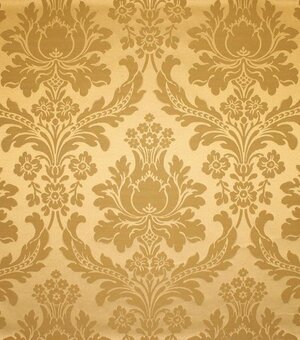
By the 14th century the weaving technique had evolved from hand-looms into using draw looms instead and now most Damasks were made in just one color with the motifs woven in a glossy silk and the background in a matte, duller material.
During the Renaissance the patterns became more dense and more elaborate, with scrolled motifs of Acanthus leaves and feathers. And this style became very popular, actually so popular that it’s still in many ways the style that we associate with a Damask pattern today.
THE DECLINE AND REVIVAL OF DAMASK PATTERNS
However, as always, after a peak, comes a decline.
At the start of the 19th century came another turning point for the Damask fabric and pattern style and its popularity. In 1801 the Jaquard loom was invented. This was an important factor for the budding Industrial Revolution. The Jaquard loom made it possible to produce fabric much faster and to a lesser cost, resulting in cheaper products as well as making it easier to create more complex and detailed motifs and patterns.
By now Damask fabrics could be afforded by the middle class as well. But with the mass production came lesser quality, a typical consequence and soon Damask fabrics were no longer considered as exclusive and the trend ebbed out.
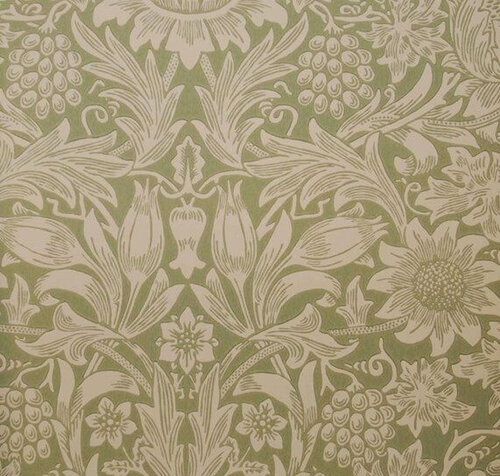
William Morris & Co: Sunflower
The Arts & Crafts movement brought back the appreciation for hand-crafted goods again, including Damask fabrics and pattern style.
The 19th century saw the impact of the industrial revolution affecting our society in many ways. One critical force arising was the Arts and Crafts movement, who resented the industrial mass produced products. They thought that it took away the important factor of good design, good craft and the beauty of authentic materials. They brought back the appreciation for hand-crafted goods again, including Damask fabrics and also its pattern style.
WANT TO LEARN ABOUT HISTORICAL AND CLASSICAL PATTERN STYLES, TYPES AND MOTIFS?

DAMASK PATTERN TYPES AND CHARACTERISTICS
The Damask pattern style is highly versatile and is why it has continued to be popular and remains a classic style century after century.
Style wise we can divide the Damask into two categories - traditional and contemporary.

Image 1 Traditional Damask wall covering, Brewster
Image 2: Contemporary Damask, Timorous Beasties
The traditional has classic motifs:
-
botanicals,
-
flowers,
-
scrolled leaves,
-
fruits
-
animals.

Traditional Damasks featuring flowers, scrolled leaves and birds from the house of Scalamandre
The contemporary are more experimental, using all kinds of motifs and themes from
-
abstract geometric,
-
ink blobs,
-
deer heads,
-
sculls
-
motifs for children
-
new, bright or bold colorways
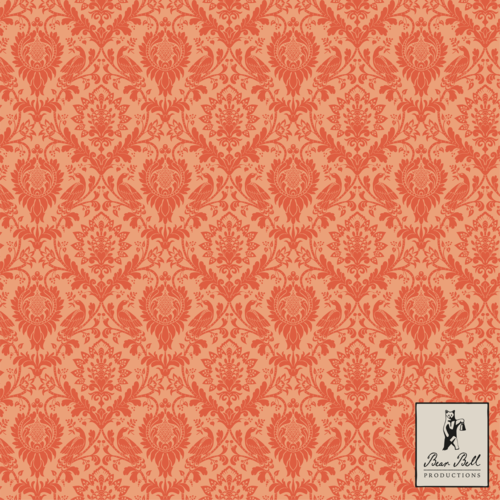
Damask pattern with a contemporary colorway. Design by Bärbel Dressler, Bear Bell Productions
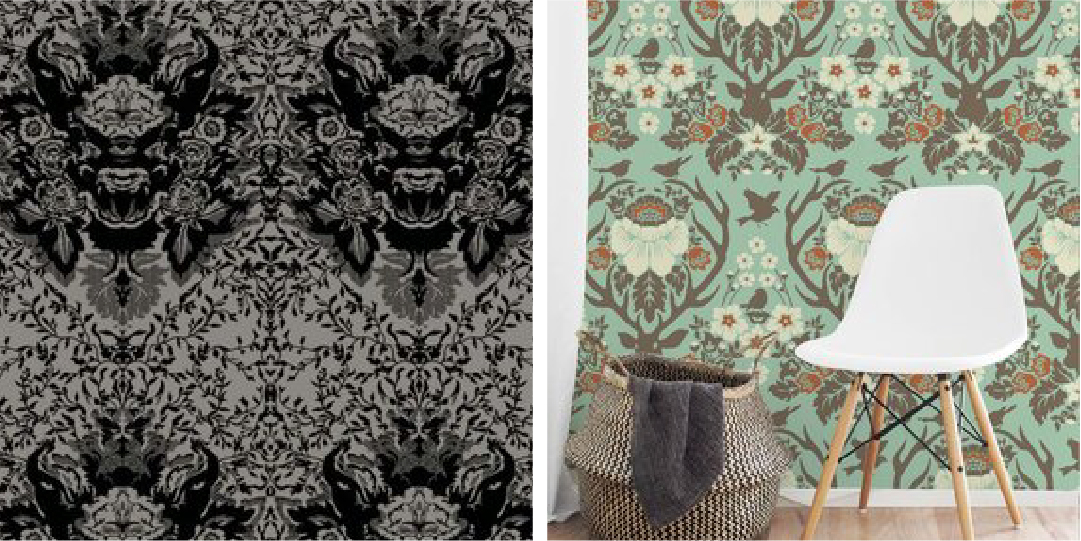 Timorous Beasties and Milton & King Wallpaper
Timorous Beasties and Milton & King Wallpaper
Symmetry is another strong characteristic of the Damask pattern style and also one that emulates shapes in nature, a strong building block of the physical world.
The word symmetry was derived from the Greek words for “agreement” and “arrangement” and gives a pleasing sense of order in the intricate patterns through similarity and regularity.
CREATE YOUR OWN DAMASK PATTERNS
Today Damask fabrics are still very popular among designers and often used for couture fashion and interiors. It can be extremely expensive at the high end and therefore still associated with elegance and luxury.
A common contemporary use for damask fabrics is for table cloths and napkins. It’s also used for drapes, curtains and upholstery.
As for the pattern style, it can be seen on just about anything today, not only on woven fabric but also printed fabric and other materials and surfaces, from wallpaper to bedding and stationery.
So we can be sure that both the Damask fabric and the pattern style will continue to be a part of our future!
Symmetry in a Damask tile - Bärbel Dressler, Bear Bell Productions
TO INSPIRE YOUR OWN DAMASK
Perhaps you can take a walk outside and look for symmetry in nature, from the wings of a butterfly, two halves of a strawberry, to shells on the beach, paying close attention to both the smallest and largest details in the natural world will fuel your own symmetrical discoveries, ready to turn into your own Damask.
Things to look out for range from symmetry in the landscape and buildings to the leaves on trees, seed pods, insects, sea creatures, flowers and vegetables.
What else can you think of?
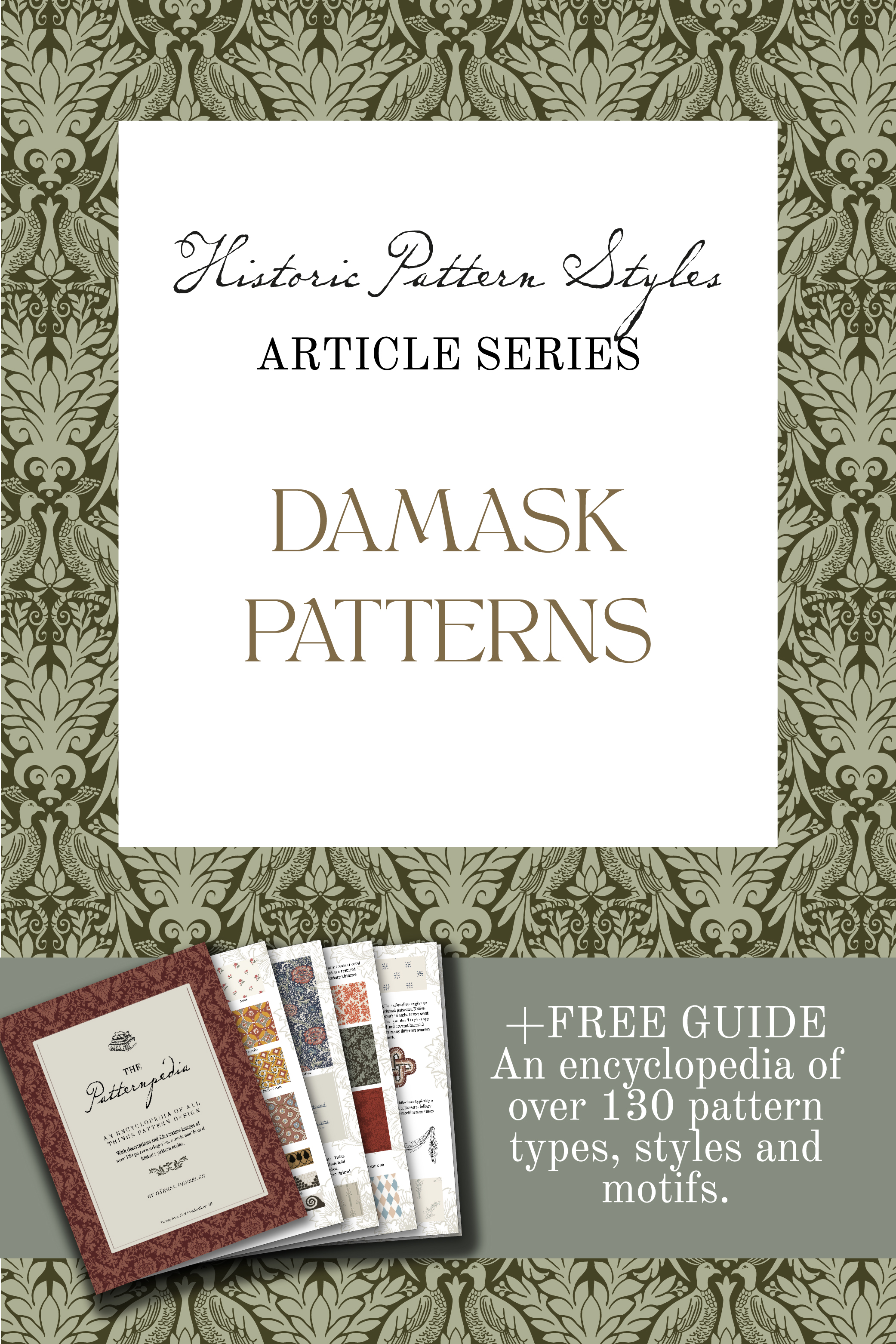
Pop a pin in it and save for later!
